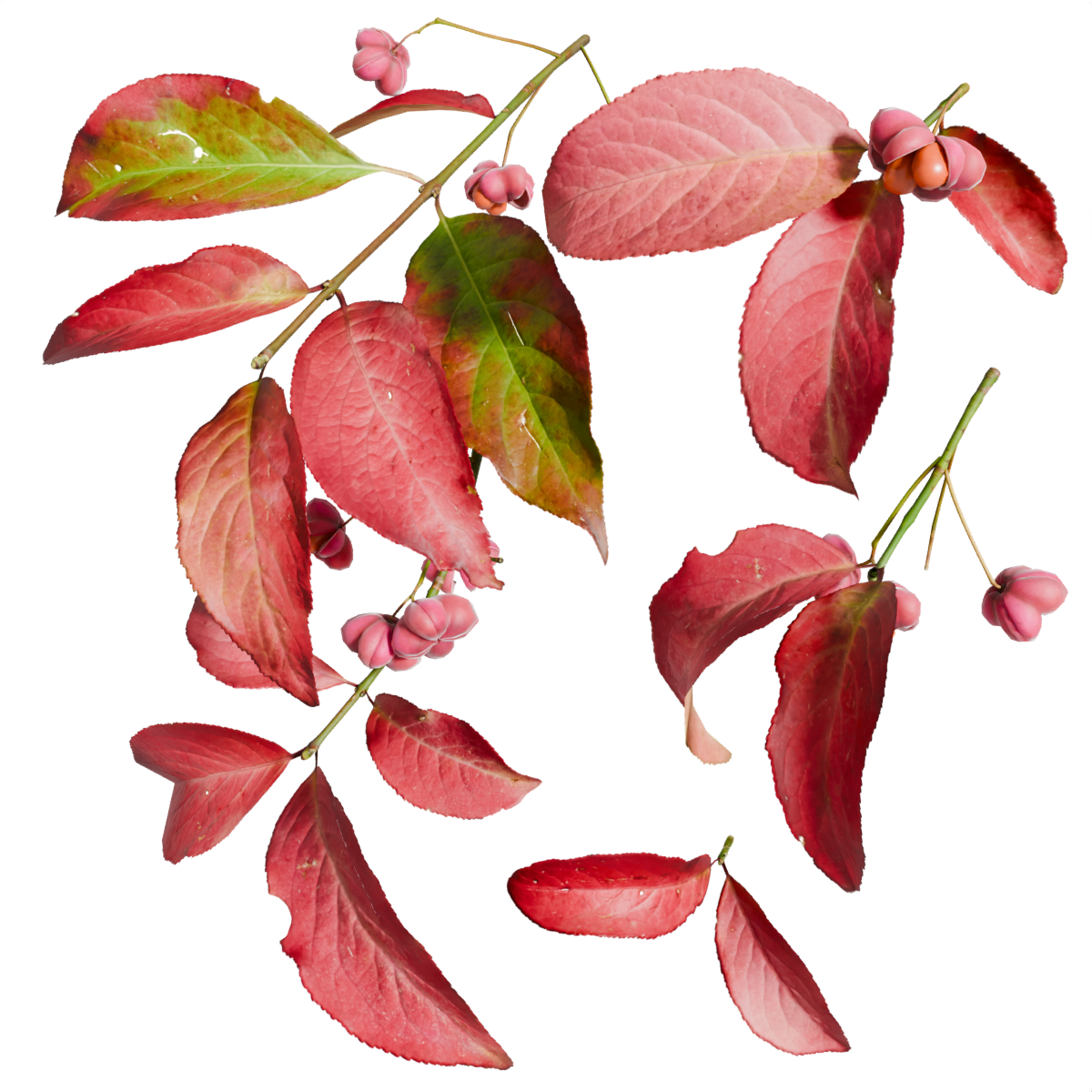Spindle
Spindle
Celastraceae / Euonymus europaeus – Spindle, wahoo, burning bush
A small tree native to the temperate areas of Europe. The species that was captured here is the European spindle tree, but it has several cousins across the globe – there are the wahoo and the strawberry bush in the US, and the burning bush in Asia. They all are very similar in appearance, with the same intense fall colors and crazy looking seed pods. I love the many names for this tree.
Spindle trees remain fairly unnoticed until late summer, when the abundant (but toxic) seed pods turn to a bright pink and orange color – soon followed by the leaves that shift to a crazy intense pink mixed with crimson red.
The leaf colors vary from tree to tree. The exposure to light, cold and water are all factors that can make or break a tree’s autumn colors. The donor tree for these twigs was a really bright pink color, but some of the other trees around were a much darker crimson color. So feel free to add a curves node after the diffuse map, to reduce the exposure by up to 2 stops.
This twig was captured in October in Western Europe, in the midst of the autumn season. At this time, many of the pink fruit pods have opened up to reveal the fleshy orange seeds within. They are so small that many people don’t notice the beautiful colors and shapes of the fruit pods.
Spindle trees grow up to 6 meters tall, so it’s a fairly small tree. Often multi-stem, or branching low above the ground. The leaves appear in opposite pairs along the branch, and side branches grow at an almost 90 degree angle to the parent branch. This perpendicular branching gives the tree a slightly messy character to start with, but over time the tree organizes its branches in a pleasing form.
